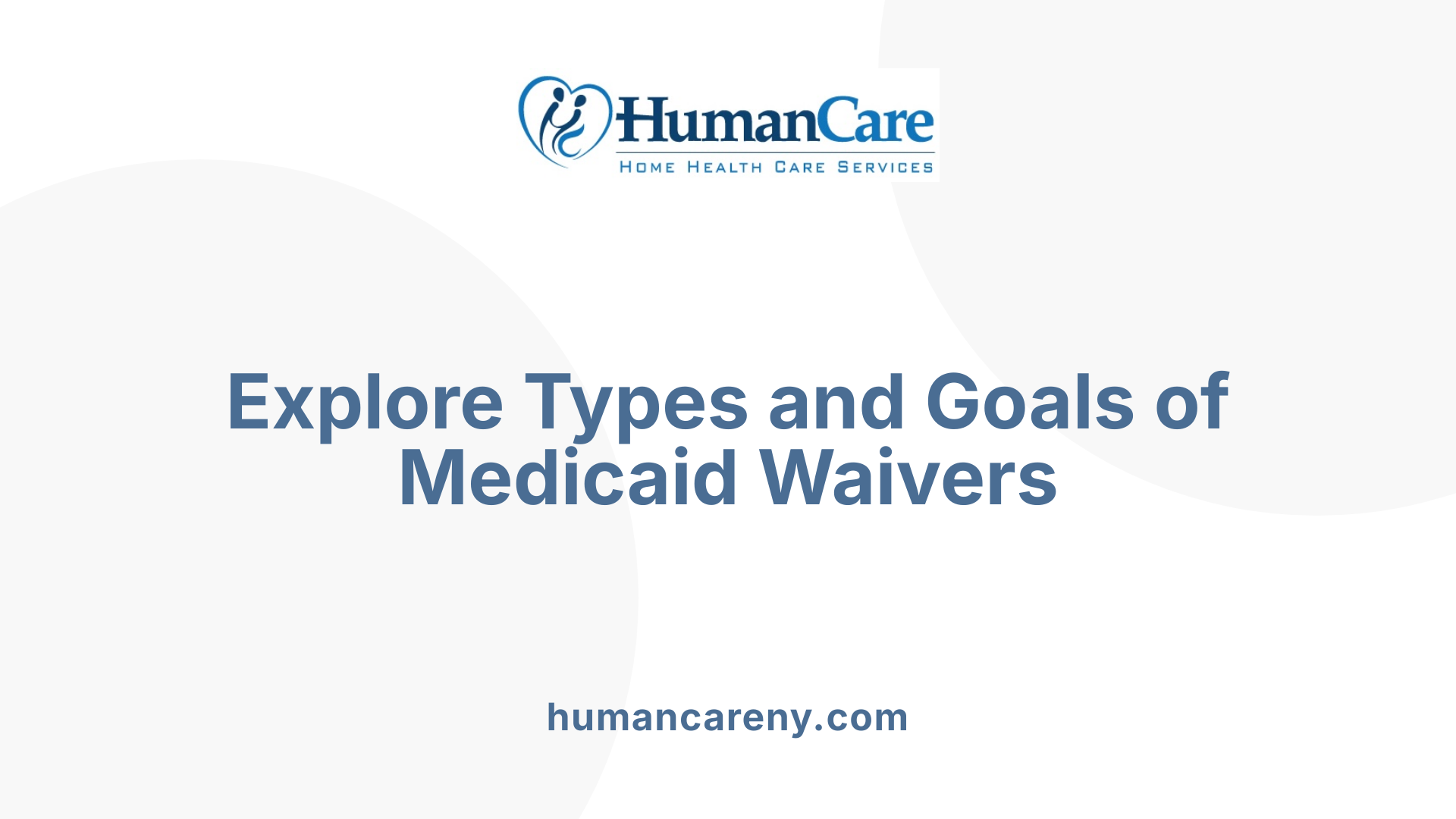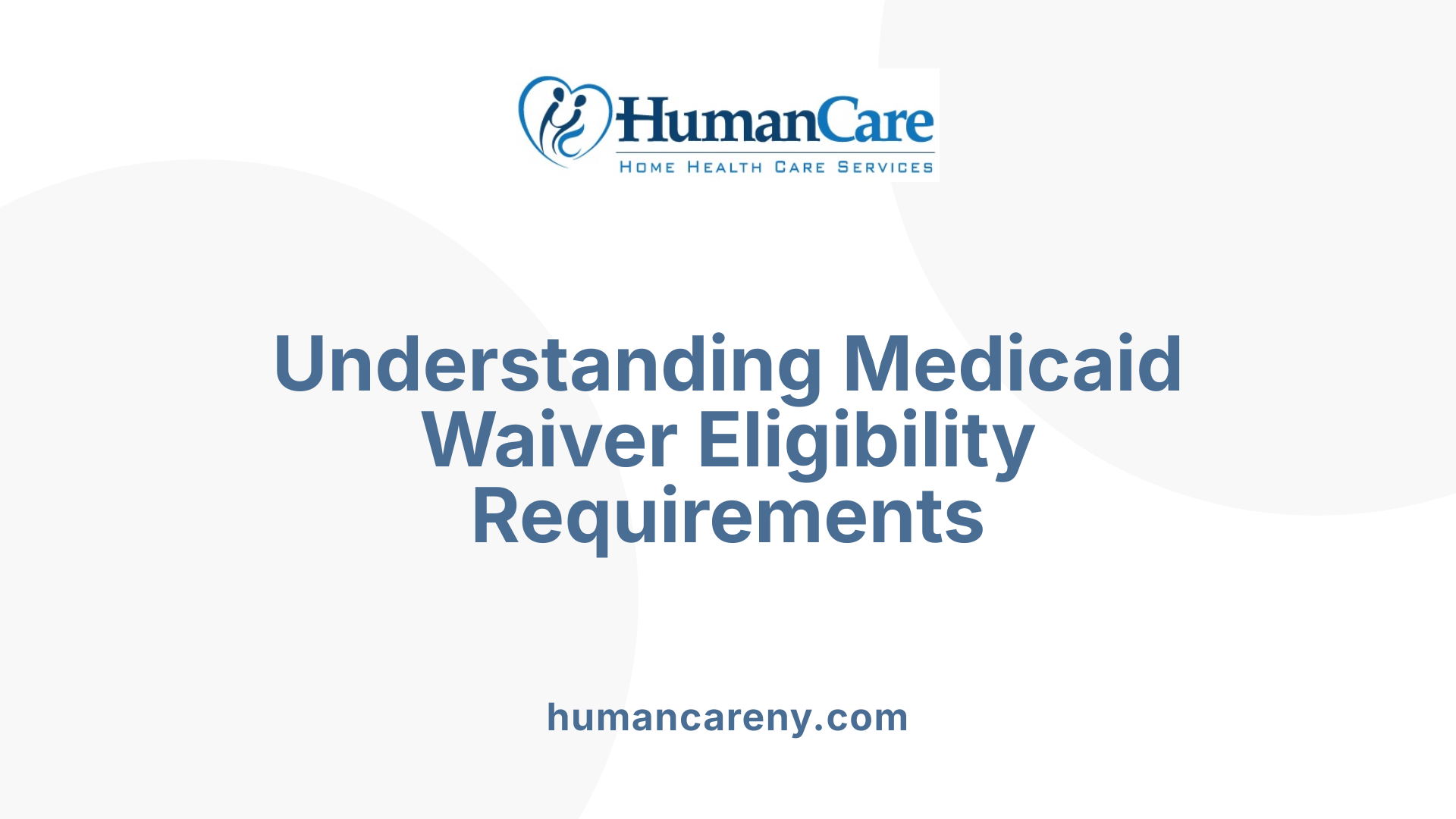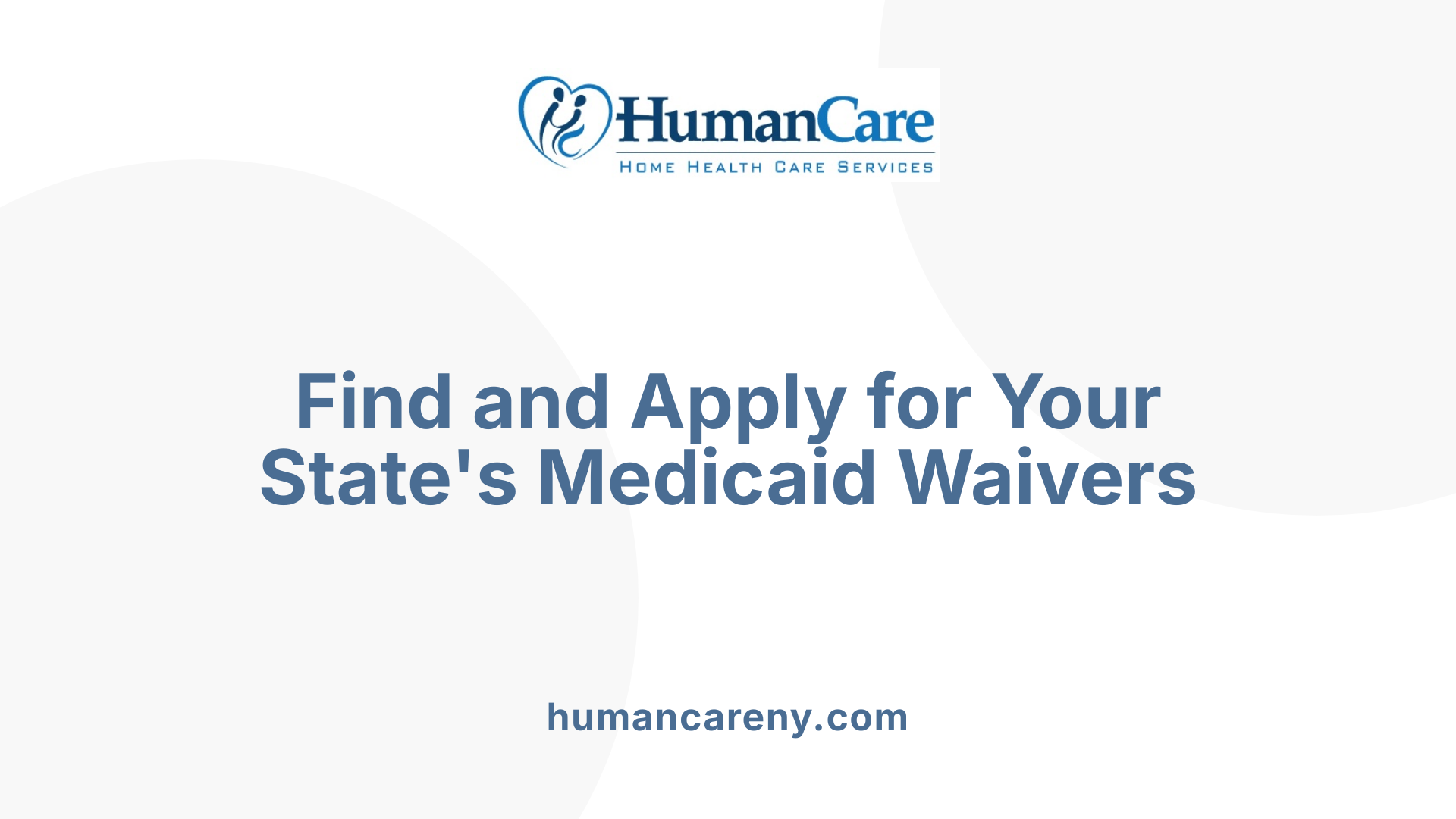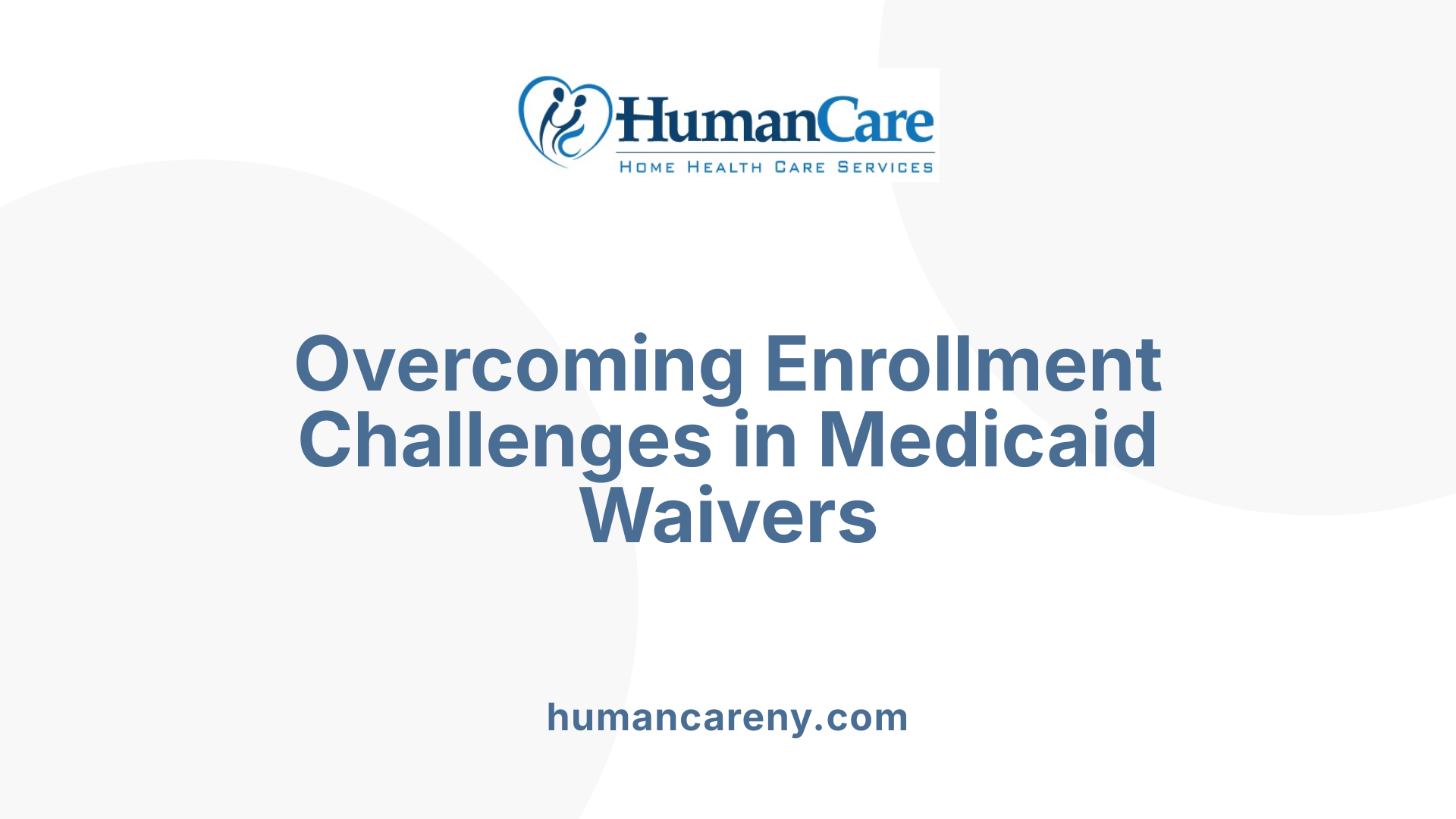Understanding the Foundation of Medicaid Waivers
Medicaid waiver programs are vital tools that extend Medicaid's reach, allowing states to offer tailored services outside traditional institutional settings. Navigating their enrollment processes requires understanding their types, federal guidelines, and state-specific adaptations. This comprehensive guide outlines how individuals and providers can effectively access and participate in these programs, emphasizing the importance of compliance, documentation, and supportive services to ensure successful enrollment and ongoing participation.
Overview of Medicaid Waiver Programs and Their Purpose
 Medicaid waivers are special provisions that allow states to customize Medicaid services beyond federal standard rules. They enable the delivery of services in ways that better meet the needs of specific populations, particularly those preferring home or community-based care.
Medicaid waivers are special provisions that allow states to customize Medicaid services beyond federal standard rules. They enable the delivery of services in ways that better meet the needs of specific populations, particularly those preferring home or community-based care.
Federal guidelines set the foundation for these waivers, but states have the flexibility to adapt them according to local health needs and policy goals. This adaptability results in various types of Medicaid waivers designed to serve distinct groups and facilitate innovative care approaches.
There are several main types of Medicaid waivers:
| Type | Description | Target Population | Features |
|---|---|---|---|
| 1915(c) | Home and Community-Based Services Waivers | Individuals needing long-term care services in community settings | Flexibility to design personalized service plans; can waive certain Medicaid rules |
| 1115 Demonstration Waivers | Testing new healthcare approaches | Diverse populations; often for expanding coverage or testing new models | Innovations in care delivery; may alter eligibility or benefits |
| 1915(i) | State Plan Personal Care Services | Individuals eligible for Medicaid without requiring institutional care | State plan services, accessible without waivers; promotes community living |
| 1915(k) | Community First Choice Option | Medicaid enrollees requiring help with daily activities | Offers personal care services with federal funding for self-directed care |
The primary aim of these programs is to promote community-based care by allowing individuals to stay in their homes or local communities instead of institutional settings. They help improve quality of life, uphold individual preferences, and enhance the efficiency of healthcare delivery.
Understanding how each waiver functions and its specific purpose is essential for providers and applicants to ensure proper eligibility and service delivery. These programs work within federal guidelines but are tailored by states to address local healthcare needs effectively.
For more detailed information on different waiver types and federal guidelines, searching
Eligibility Criteria for Medicaid Waivers: State and Federal Considerations

What are the eligibility requirements for Medicaid waivers?
Medicaid waivers are designed to provide essential services to individuals who wish to remain in their homes or community settings instead of residential institutions. The eligibility criteria focus largely on health, functional capacity, and financial status.
Most individuals seeking waiver services must demonstrate a need for a level of care similar to what they would receive in a nursing home. This includes assistance with activities of daily living such as bathing, dressing, or eating, or the presence of a significant health condition requiring ongoing support.
Eligibility often hinges on medical and functional assessments that verify an individual's need for services. Conditions commonly qualifying for waivers include Alzheimer’s disease, developmental disabilities, traumatic brain injuries, or other chronic health conditions that impact independence.
State-specific rules influence the precise requirements, as each state develops its own criteria within federal guidelines. States can also set limits on the number of people served through these programs and may prioritize particular populations, such as seniors or individuals with severe disabilities.
In addition to medical criteria, financial eligibility plays a crucial role. Applicants usually must meet income and resource limits comparable to traditional Medicaid. These limits ensure that services are targeted to those who genuinely need financial assistance.
To start the process, individuals should consult their state's Medicaid office or website. There, they can find detailed information about the specific eligibility requirements, application procedures, and available services. Applying involves documentation of health status, income, and sometimes functional assessments, with the possibility of waiting lists depending on program capacity.
Ultimately, Medicaid waivers serve as a vital resource for promoting independence and improving quality of life for vulnerable populations by offering them personalized services tailored to their health and financial situation.
For more detailed information about eligibility criteria specific to each state, an excellent resource is the search query: Medicaid waiver eligibility criteria by state.
Step-by-Step Enrollment Process in Medicaid Waiver Programs

What is the process for enrollment in Medicaid waiver programs?
Enrolling in Medicaid waiver programs involves several essential steps to ensure that eligible individuals can access community-based services tailored to their needs. The first stage is an initial eligibility assessment, which verifies whether an individual qualifies for Medicaid based on income, residency, and disability criteria.
The assessment also considers the person's need for a level of care comparable to institutional services, which is vital for HCBS Waivers. Once eligibility is established, the individual must prepare and submit an application. This process can typically be initiated through local Medicaid offices, community agencies, or specialized programs like OPWDD or state-specific service centers.
Supporting documentation plays a crucial role in the application. Applicants need to provide proof of residence, income, and disability status, along with other documents such as birth certificates or proof of resources. Many states offer downloadable, multilingual application forms to facilitate this process.
Following submission, the application undergoes a review process which includes an evaluation of the applicant's service needs, living arrangements, and level of care required. This step might involve health assessments or interviews by designated case managers or service coordinators.
During this review phase, a comprehensive evaluation is carried out to determine if the applicant meets the specific criteria for the waiver and to establish the appropriate service plan. Waitlists may apply in high-demand areas or for certain programs, so applicants should be prepared for potential delays.
Upon approval, the individual receives a notice of eligibility and may proceed to select providers approved for the waiver. Providers, in turn, must complete licensing requirements, background checks, and compliance training to be authorized to deliver services.
This coordinated process ensures that eligible individuals receive personalized, community-based support that enhances independence and quality of life while maintaining compliance with state and federal regulations.
Researching and Applying for State-Specific Medicaid Waiver Options

How do eligibility criteria vary across states for Medicaid waivers?
Eligibility criteria for Medicaid waivers differ greatly from state to state, since each state customizes its programs while adhering to federal guidelines. For example, Texas manages seven distinct waivers, such as the Community Living Assistance and Support Services (CLASS) and Home and Community-based Services (HCS), each with unique eligibility rules, interest list procedures, and service offerings like personal care, therapies, and home modifications.
Some states may set broader eligibility standards, including more inclusive income thresholds or specific health conditions, while others adopt stricter criteria focusing on particular populations like seniors or children with disabilities. The focus of these waivers often reflects state priorities—some aim to keep individuals in their homes, others to support community integration, and some to reduce institutional care.
Furthermore, targeted populations for these programs, such as those with developmental disabilities or long-term health needs, influence eligibility standards. This variation allows each state to tailor its Medicaid waiver programs to local needs but requires providers and applicants to thoroughly research specific state requirements.
Understanding these differences is vital for prospective clients and providers to determine eligibility and develop successful application strategies. It underscores the importance of reviewing each state's Medicaid website and available resources, as eligibility, process steps, and service packages can vary significantly.
For those interested, searching with terms like "State-specific Medicaid waiver eligibility and application procedures" can help locate detailed, current guidelines and procedural updates.
Requirements for Becoming a Medicaid Waiver Provider
What are the requirements to become a Medicaid waiver provider?
Becoming a Medicaid waiver provider involves several steps to ensure compliance with state and federal regulations.
First, applicants must establish a legal business structure. This includes registering as a legal entity, obtaining an Employer Identification Number (EIN), and securing any necessary business licenses as required by state law.
Staff qualifications are also critical. Providers need qualified personnel, such as Certified Nursing Assistants (CNAs), Registered Nurses (RNs), social workers, or other certified professionals aligned with the services offered. Staff certifications and background checks are mandatory to ensure safety and competence.
Liability insurance is another essential requirement. Providers must carry adequate liability coverage to protect clients and the organization from potential claims.
The application process begins with reviewing the specific waiver’s handbook and gathering necessary documentation. This includes proof of business registration, insurance, staffing credentials, and evidence of facility safety standards.
Most states mandate comprehensive background screening through the Background Screening Clearinghouse, which involves fingerprinting and checks against criminal and registry databases. The results are submitted along with the application.
Once the application package is complete, regional enrollment specialists review the submission, conduct site visits if needed, and verify compliance with safety, health, and accessibility standards.
If approved, providers receive a Medicaid provider ID or NPI number and sign a Medicaid Waiver Services Agreement. They must then wait for service authorizations from Waiver Support Coordinators before beginning service delivery.
Ongoing compliance requires regular staff training, internal audits, and adherence to policy updates. Providers must also stay prepared for periodic inspections and audits to maintain their approval status.
Different provider types (agency vs. individual) may have additional specific requirements related to oversight, licensing, and ongoing monitoring, depending on the program’s regulations.
Types of Services and Support Coordinations in Medicaid Waivers
Home and community-based supports
Medicaid waivers, especially Home and Community-Based Services (HCBS) waivers, primarily focus on providing support in familiar environments such as homes and communities. These services include personal care, homemaker services, home health aides, respite care, adult day health, and habilitation. They are designed to help individuals live independently or with family, rather than relying on institutional settings.
States tailor these services based on individual needs, with some waivers also offering transportation, emergency response systems, and facility modifications. These supports not only improve quality of life but also promote community integration.
Case management and service planning
A core component of Medicaid waivers is personalized planning. Support coordinators develop a detailed, person-centered service plan that considers the individual’s preferences, health status, and goals. This plan guides all service delivery, focusing on achieving meaningful life outcomes.
Case management involves assessing needs, coordinating with various providers, and regularly reviewing the plan’s effectiveness. Support coordinators also ensure services align with evidence-based practices and comply with state and federal policies.
Coordination between agencies and providers
Successfully delivering services requires collaboration among multiple entities—state Medicaid agencies, service providers, healthcare professionals, and community organizations. Support coordinators serve as liaisons, ensuring seamless communication and resource sharing.
They facilitate the referral process, verify provider qualifications, and oversee service delivery to meet required standards. Effective inter-agency coordination helps prevent service gaps, ensures compliance, and supports integrated care.
Person-centered planning approach
A fundamental principle underpinning Medicaid waivers is person-centered planning. This approach emphasizes individuals’ choice, independence, and dignity. Plans are tailored to each person’s unique needs, preferences, and cultural background.
Support coordinators work closely with individuals, empowering them to make informed decisions about their services. This approach enhances engagement, ensures services are desirable and effective, and promotes better health and social outcomes.
Emergency and routine service coordination
Providers are responsible for managing both routine supports and emergency situations. Support coordinators help develop emergency preparedness plans, including contacts, evacuation procedures, and access to urgent care.
Routine service coordination involves scheduling, monitoring, and adjusting supports as needs change. Maintaining flexibility and readiness ensures individuals receive consistent care, whether in daily life or during unexpected crises.
| Aspect | Description | Additional Details |
|---|---|---|
| Home and Community Supports | Services enabling independent living | Personal care, transportation, modifications |
| Service Planning | Developing personalized plans | Person-centered, goal-focused |
| Agency Coordination | Inter-agency communication | Supports, healthcare, community resources |
| Person-centered Approach | Respect for individual choices | Choice-driven, culturally sensitive |
| Emergency Management | Support during crises | Emergency plans, rapid response |
Understanding how services operate and coordinate within Medicaid waivers helps agencies and individuals navigate complex systems more effectively. This ensures personalized, consistent support that improves overall quality of life.
Addressing Common Challenges in Medicaid Waiver Enrollment

What are common challenges faced during Medicaid waiver enrollment?
Enrolling in Medicaid waiver programs can be a complex process, often presenting several hurdles for applicants and providers. One significant challenge involves navigating intricate and differing application procedures across states, which can slow down or hinder the enrollment altogether. Applicants may face delays or even denials because the application requirements and processes are not standardized and can be confusing.
Another obstacle is determining eligibility. States use specific and sometimes strict criteria based on medical need, financial status, or risk of institutionalization. These criteria can vary widely, making it hard for individuals to understand if they qualify, and for agencies to guide clients effectively.
Securing provider participation presents additional difficulties. Many providers are not enrolled or willing to accept waiver clients due to administrative burdens or unclear pay structures. The limited number of participating providers can restrict service options for enrollees.
Managing the necessary documentation is also a common concern. Applicants need to collect and submit multiple forms, such as proof of income, disability status, and facility inspections, which can be overwhelming without proper guidance.
Furthermore, the variability of programs—like 1915(c), 1115, and others—along with diverse state policies, adds another layer of complexity. This inconsistency hampers understanding and accessing the right services.
Overall, these issues—application complexity, eligibility challenges, limited provider networks, administrative burdens, and state-to-state differences—combine to make Medicaid waiver enrollment a demanding process. Addressing these challenges requires clear guidance, streamlined procedures, and greater provider engagement to improve access to vital community-based services.
Empowering Through Knowledge
Navigating Medicaid waiver program enrollment processes can be complex, but with thorough research, understanding of state-specific requirements, and meticulous preparation, applicants and providers can successfully access these valuable services. Staying informed about eligibility criteria, document requirements, and support services ensures a smoother journey from application to service delivery. Continuous ongoing compliance and effective service coordination further enhance the experience, helping individuals achieve their goals of community-based, personalized care. Ultimately, empowerment through knowledge fosters better access, improves outcomes, and supports the ideals of person-centered, community-focused health care.
References
- Navigating State Licensing for Medicaid Waiver Services
- Home & Community-Based Services 1915(c) - Medicaid
- A Comprehensive Guide to Becoming a Licensed Provider for ...
- What Is A Medicaid Waiver? Your Guide To ... - AssistedLiving.org
- Eligibility Policy | Medicaid
- Policy Waivers | Department of Health and Human Services
- Home and Community-Based Services (HCBS) Waivers Program
- Texas Medicaid Waiver Programs for Children with Disabilities



